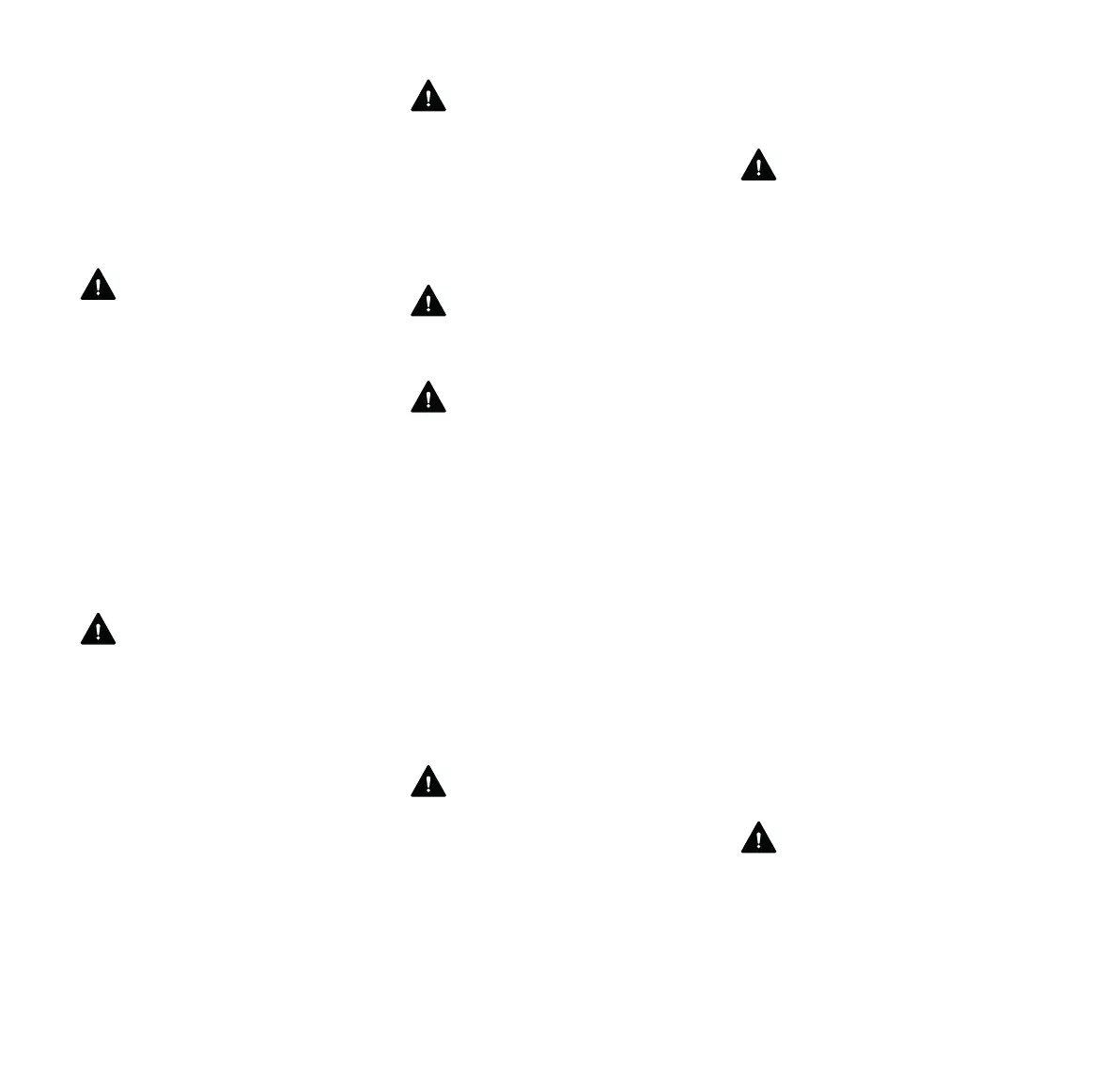MS 194 T
English
14
EPA/OSHA/NIOSH and occupational
and trade associations with respect to
dust ("particulate matter"). When the
inhalation of dust cannot be
substantially controlled, i.e., kept at or
near the ambient (background) level, the
operator and any bystanders should
wear a respirator approved by NIOSH /
MSHA for the type of dust encountered.
WARNING
Breathing asbestos dust is dangerous
and can cause severe or fatal injury,
respiratory illness or cancer. The use
and disposal of asbestos-containing
products have been strictly regulated by
OSHA and the Environmental Protection
Agency. Do not use your chain saw to
cut or disturb asbestos or asbestos-
containing products. If you have any
reason to believe that you might be
cutting asbestos, immediately stop
cutting and contact your employer or a
local OSHA representative.
Operating Instructions
WARNING
Do not operate your chain saw with the
starting throttle lock engaged. Cutting
with the starting throttle lock engaged
does not permit the operator proper
control of the chain saw or saw chain
speed. Begin and continue cutting with
the saw at full throttle, engage the
bumper spike firmly in the wood (if
possible) and then continue cutting.
Always work with the bumper spike so
that you have better control of the saw. If
you work without the bumper spike the
chain saw may pull you forwards
suddenly.
WARNING
Never touch a saw chain with your hand
or any part of your body when the engine
is running, even when the chain is not
rotating.
In the event of an emergency, switch off
the engine immediately – move the
Master Control Lever to STOP, 0 or †.
WARNING
Always stop the engine before putting
the chain saw down.
WARNING
The saw chain continues to move for a
short period after the throttle trigger is
released (flywheel effect).
Accelerating the engine while the saw
chain is blocked increases the load and
will cause the clutch to slip continuously.
This may occur if the throttle is
depressed for more than a few seconds
when the saw chain is pinched in the cut
or the chain brake is engaged. It can
result in overheating and damage to
important components (e. g. clutch,
polymer housing components) – which
can then increase the risk of injury, e. g.,
from the saw chain moving while the
engine is idling.
WARNING
Your chain saw is equipped with a chain
catcher. It is designed to reduce the risk
of personal injury in the event of a
thrown or broken saw chain. From time
to time, the catcher may be damaged or
removed. To reduce the risk of personal
injury, do not operate a chain saw with a
damaged or missing chain catcher.
WARNING
Inspect antivibration elements
periodically. Replace damaged, broken
or excessively worn antivibration
elements immediately, since they may
result in loss of control of the saw. A
"sponginess" in the feel of the saw,
increased vibration or increased
"bottoming" during normal operation
may indicate damage, breakage or
excessive wear. Antivibration elements
should always be replaced in sets. If you
have any questions as to whether the
antivibration elements should be
replaced, consult your STIHL servicing
dealer.
If this chain saw is subjected to
unusually high loads for which it was not
designed (e. g. heavy impact or a fall),
always check that it is in good condition
before continuing work. Check in
particular that the fuel system is tight (no
leaks) and that the controls and safety
devices are working properly. Do not
continue operating this chain saw if it is
damaged. In case of doubt, have it
checked by your STIHL servicing dealer.
Your chain saw is not designed for
prying or shoveling away limbs, roots or
other objects. Such use could damage
the cutting attachment or AV system.
WARNING
When sawing, make sure that the saw
chain does not touch any foreign
materials such as rocks, fences, nails
